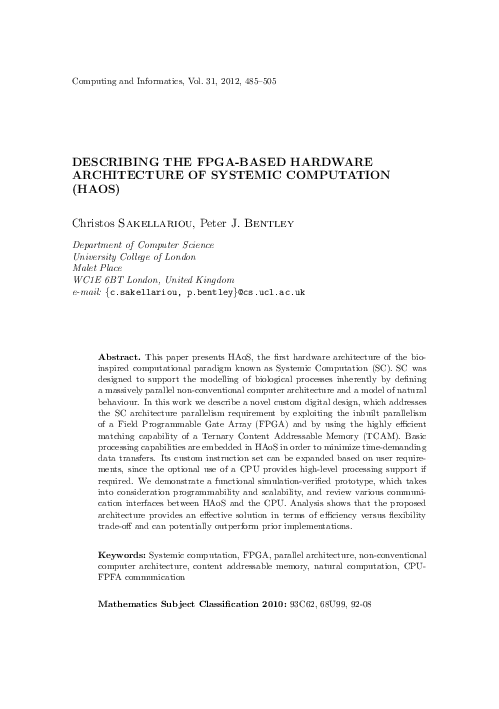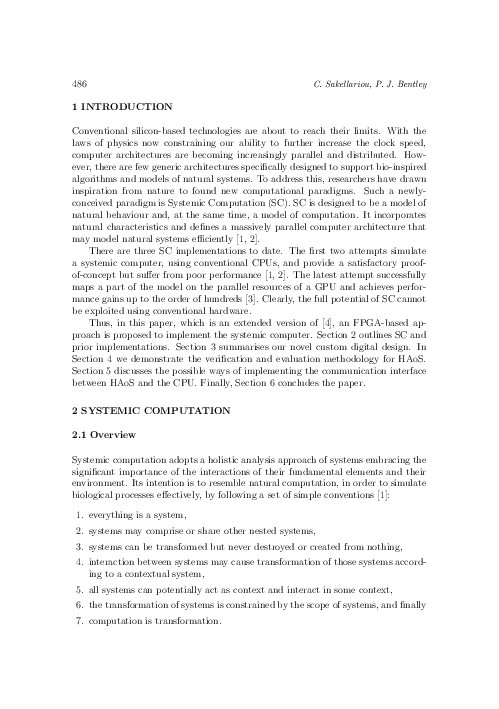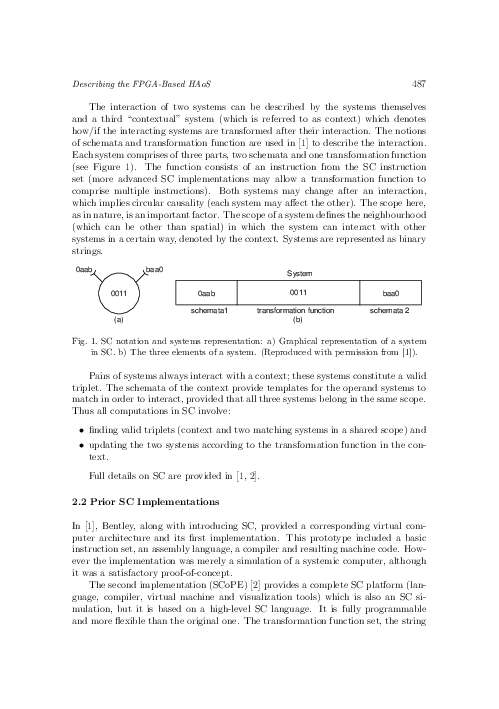Describing The FPGA-Based Hardware Architecture of Systemic Computation (HAoS)
keywords: Systemic computation, FPGA, parallel architecture, non-conventional computer architecture, content addressable memory, natural computation, CPU-FPFA communication
This paper presents HAoS, the first hardware architecture of the bio-inspired computational paradigm known as Systemic Computation (SC). SC was designed to support the modelling of biological processes inherently by defining a massively parallel non-conventional computer architecture and a model of natural behaviour. In this work we describe a novel custom digital design, which addresses the SC architecture parallelism requirement by exploiting the inbuilt parallelism of a Field Programmable Gate Array (FPGA) and by using the highly efficient matching capability of a Ternary Content Addressable Memory (TCAM). Basic processing capabilities are embedded in HAoS in order to minimize time-demanding data transfers. Its custom instruction set can be expanded based on user requirements, since the optional use of a CPU provides high-level processing support if required. We demonstrate a functional simulation-verified prototype, which takes into consideration programmability and scalability, and review various communication interfaces between HAoS and the CPU. Analysis shows that the proposed architecture provides an effective solution in terms of efficiency versus flexibility trade-off and can potentially outperform prior implementations.
mathematics subject classification 2000: 93C62, 68U99, 92-08
reference: Vol. 31, 2012, No. 3, pp. 485–505


